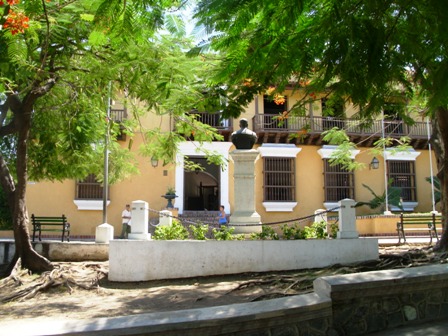Santiago de Cuba’s “Tivoli” Neighborhood
Photo Feature by Janis Hernandez

HAVANA TIMES, October 8 — No one knows exactly where the word comes from. Those who comb gray hair contradict each other. Some talk of Santiago de Cuba’s “Tivoli” as a settlement of French traders, those who founded the quarter over three centuries ago; others say it came from a group of Italian merchants.
What’s certain is that the island of Cuba has long been a port through which migrants arrived from infinite parts of the world seeking their fortunes in the prosperous Americas. The excellent location of our archipelago, in the middle of the Caribbean and with Santiago with its port, was a place where ships docked from around the world. The island was ideal for trade.
In a hilly area close to the bay, several foreigners (mostly Europeans and Arabs) built colonial-style houses in this neighborhood, which ever since has retained the name “Tivoli.”
If the transmission of knowledge, customs, beliefs and artistic works, passed from one generation to the other — meaning traditions — then both locals and foreigner in Santiago will undoubtedly visit this indispensable part of the city, which has both cultural and historical treasures.

Here lied the first “Tumba Francesa” (a town council of freed slaves and the offspring of former slaves). It was a large area of markets and fairs.
Here too was founded one of the first schools of nuns, Hermanas de la Caridad, known as the Colegio de Belen. A beautiful church which is called Los Desamparados was also built on a steep slope.
Tobacco makers, printers, dyers, inns and animated nightlife were found here, delighting residents and visitors with dancing and street theater.
Fidel Castro lived in this neighborhood for a few years of his childhood, and it’s said that he delighted in looking out from his family’s patio at the roofs and suburbs, whose perimeter was the sea.

Important actions occurred here in the period of revolutionary struggle, including the taking of the police station on November 30, 1957, in the famous “Loma del Intendente,” today the “Museo de la Clandestinidad” (The Museum of the Underground Struggle).
The neighborhood is formed by narrow streets and grand stairways such as Padre Pico. Its carnival traditions resulted in one of its urban arteries being nicknamed the “Calle de los recuerdos” (the street of memories).
These days “El Festival de Pregón” (the Festival of Street Vendor) is celebrated in its’ streets every year, and there’s not a single tourist visiting Santiago who doesn’t want to visit the Casa de Tradiciones, where one can enjoy great local creole food: roast pork, rice and beans and eastern hayacas made in the Fogon de Ño Pompa (A legendary character from Santiago popular theater.), as well as drink saoco, canchánchara o cañambril (Typical drinks from Cuba’s eastern region.), and dance to son, changui or conga.
All this and one can also see believers placing offerings at the foot of the leafy ceiba, the sacred tree of the “orishas” (Saints of the Afro-Cuban religion) found only in Santiago’s Tivoli neighborhood.
Click on the thumbnails below to view all the photos in this gallery. On your PC or laptop, you can use the directional arrows on the keyboard to move within the gallery. On cell phones use the keys on the screen.






























Comments are closed.